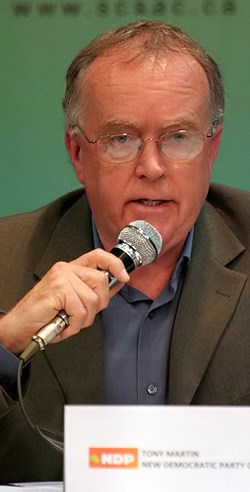NEWS RELEASE
TONY MARTIN, MP
************************** Martin cheers report urging border flexibility
‘Dysfunctional’ U.S. policy prompts concerns
SAULT STE. MARIE - A joint report from American and Canadian think tanks urging border flexibility recognizes different regional areas like the Great Lakes Gateway and “is the common sense needed between the two countries,” Sault MP Tony Martin said yesterday.
“The American Hudson Institute refers to the dysfunctional way the U.S. manages its border and I couldn’t have said it better,” Martin said. “The border is more than a line on a map. It is a collection of corridors and gateways and we need to be smart and flexible not only in different rules the U.S. has for Canada and Mexico but for the different regions and different types of users.”
The report, by the Canadian International Council and the Metropolitan Policy program at the Brookings Institution, stresses the impact of border issues on everyday economic affairs.
The report identifies four different border regions along a 5,525-mile long border for U.S. and Canada: The Pacific-Northwest Cascadian border between Washington State and British Columbia; the Great Lakes border with a unique pattern of trade tied mostly to bridges; the rural border, or “spaces in between”; and the maritime ports and airports’ “invisible border.”
There are four groups of users too: commercial consumers like businesses, commuters like nurses working or families visiting relatives, amateur travelers and illicit users.
“Unfortunately, we have had a one-size fits all policy tailored to the illicit group of users such as cigarette, drug and human traffickers as well as terrorists with rules that negatively harm the rest of us and the economy,” Martin said. “By identifying the different corridors and different users this report may serve a useful purpose in creating a flexible policy that will always pay attention to security while achieving a goal that keeps the border as open as possible for commerce and travelers.”
The Great Lakes Gateway is the busiest section of the U.S.-Canadian border, “Canada’s economic heart and home to 40 percent of the Canadian population and nearly half of Canadian GDP.”
The priority here has been to expand or improve infrastructure but the report identifies major barriers including coordination among multiple governments and approval processes and competition among private and public infrastructure owners.
One recommendation is to form a U.S.-Canada or North American Joint Infrastructure Planning Commission.
The report can be viewed here.
**************************
